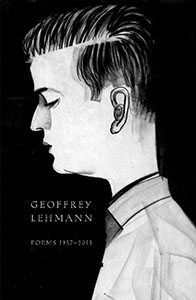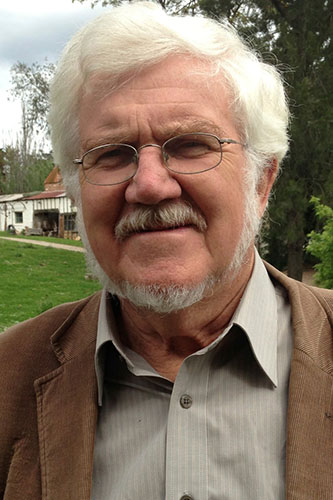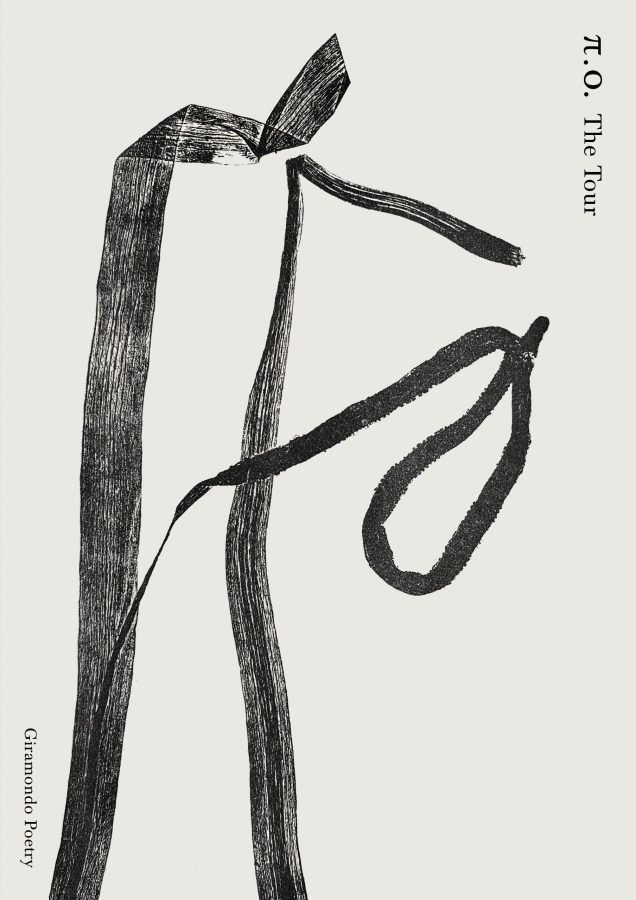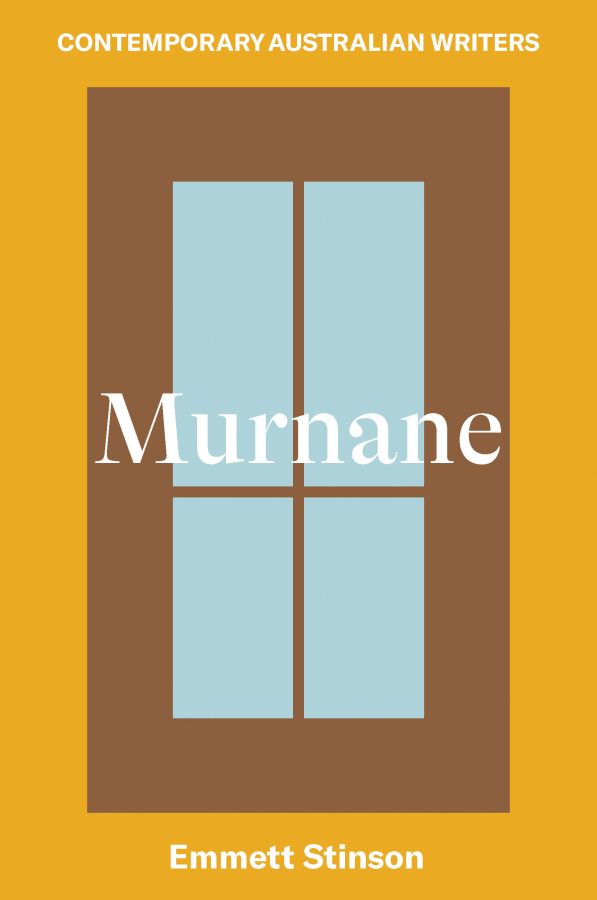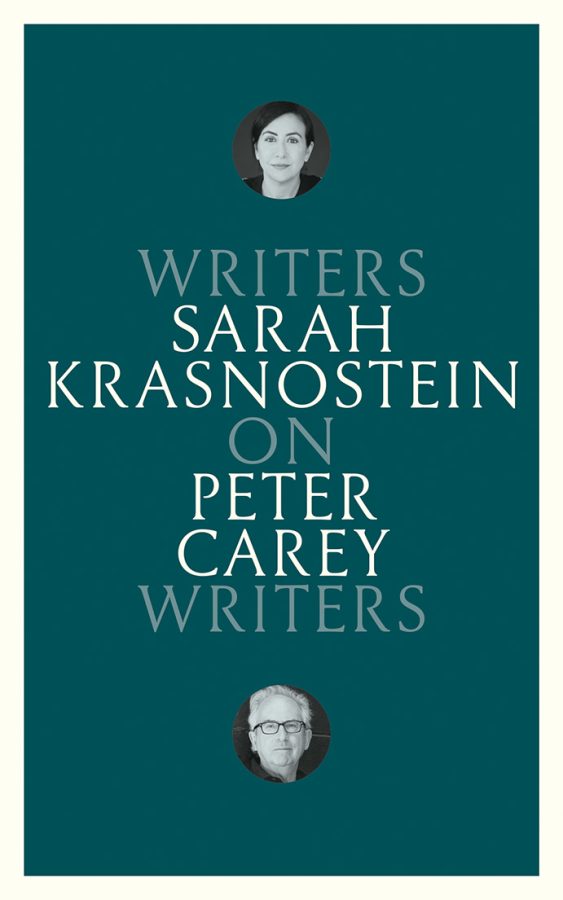Geoffrey Lehmann’s Poems 1957–2013 is a great opportunity to do two things: enjoy a lot of memorable Australian poems ranging across more than half a century and to examine the trajectory of a long and now completed career. Lehmann has written recently that
Poetry either happens or it does not happen. To my surprise I experienced a new enthusiasm for writing poetry in my sixties that lasted until very recently. But I think this may now have run its course. John Forbes once said (I believe): ‘You don’t give up writing poetry. Poetry gives you up.’
To his numerous admirers, this admission might seem sad and premature, but this new collected edition (Lehmann’s second — the first came out in 1997) reinforces the finality of the above statement. Sydney-born Lehmann was only eighteen when his remarkable poem, ‘An Image’ was published in the London Magazine. At only 25, he shared his first collection, The Ilex Tree (1965), with Les Murray. Several other collections, strangely not referred to in this summation of them, followed.
Like almost all Australian poets, Geoffrey Lehmann has also had a day job — in his case as a tax lawyer and partner in an international accounting firm. He published a classic text on taxation and, for a time, had a column in the Australian on related matters. As his more autobiographical poems attest, Lehmann also raised five children through two marriages (and the space between them). Over this time, he also produced the 364 pages of this new collected edition which, he says, ‘contains all the poetry written by me that I think is worthwhile including in a book’. Now, quite reasonably, Lehmann has decided to retire from these parallel lives. Poems 1957–2013 is thus a definitive statement of a life’s work. Certainly, it is arranged to give this impression.
The book begins with the very distinctive, and perhaps slightly atypical, ‘Simple Sonnets’ sequence, which first appeared, in rather different form and order, in Lehmann’s third collection, Conversation with a Rider (1972). He then returns to the striking early poems that preceded Nero’s Poems (1982). After the humorously self-important bombast of Nero, the poet then offers us, in ‘Spring Forest’, the radically different tones of his former father-in-law, Ross McInerney. The book concludes with Lehmann’s ‘Later Poems’ (1976-2013). This simplifying to a mere five sections is a radical strategy, but it helps reinforce the unity of Lehmann’s diverse output.
Lehmann began his career under the impress of fellow Sydney poet, Kenneth Slessor, who set a technical high point to which many subsequent Australian poets have aspired. Although Slessor had not published anything in the twenty years prior to Lehmann’s debut in his late teens, Slessor and his ‘Vitalist’ circle (including the artist, Norman Lindsay) were a strong influence. This is best seen perhaps in the rather shy and mildly patrician air of some of Lehmann’s early poems and in the poet’s enduring interest in the visual arts. The revealing Charles Blackman cover drawing of the young Lehmann is just one example of this. The dedication of Nero’s Poems to the painter, Salvatore Zofrea, is another.
Lehmann was also influenced in those early days by his friend and colleague at Sydney University, Les Murray. Though their paths later diverged, they shared, at the time, a common approach to poetry and subject matter. Both were certain that the relatively-unfashionable small farmers and the landscapes they worked in were still (or had become again) a fertile, even necessary, ground for enduring Australian poetry. Together with the Slessor influence, this belief, seemingly also shared by their mutual friend Robert Gray, set them at odds with other contemporaries, such as Robert Adamson and John Tranter, who looked deliberately, even impatiently, to various American poets for inspiration.
By 1976, however, with the appearance of Lehmann’s chapbook, Extracts from Ross’ Poems, it was clear that Murray’s and Lehmann’s pastoral poems were complementary rather than overlapping. Murray’s were lyrically energetic and expressed a feeling of political solidarity with his subjects; Lehmann’s (mainly through the assumed voice of Ross McInerney) were more laconic, more philosophical, and set in poorer country, geologically and climatically. Gray, who also wrote about dairy farms on the New South Wales north coast, was different again with his painterly eye for visual detail and his concern for landscape as much as people. And, of course, the ‘Simple Sonnets’ with which this new volume opens are very different from anything either of Lehmann’s two friends has ever produced. Set in an allegorical landscape that is European rather than Australian, these sonnets, each made up of seven rhyming couplets without a volta, have more in common with Breughel’s paintings or Ingmar Bergman’s film The Seventh Seal (1957) than with any Australian lyrical tradition – excepting perhaps that of David Campbell, another important early influence on Lehmann.
Sonnet IV, ‘The Two Travellers’, is typical of the group as a whole. The poem opens with two knights noticing that ‘A girl was picking parsley near a church’ before they are duty-bound to ride on ‘Through heath and furze and up a mountainside’ to slay a dragon.
Years later in a stream we washed our hair
And swam at dusk and slept beneath a pear.A parsley field and church shone in the sun.
The girl was there. We diced and my friend won.
The poem cleverly hides as much as it reveals. We know little about the knights’ overall mission; we know even less about what happened between the girl and the narrator’s comrade — and whether or not she consented. In the other poems, the two protagonists seem decent enough, but we are left with a doubt. The closing lines of sonnet XIII, ‘Across the Border’, do not dispel them — although the woman is of a different kind.
Red skirt and turquoise blouse, one gave a stare
Of beckoning and insolent despair.Two boys with grass seeds sticky on our knees,
We spurred our horses through the darkening trees.
This sequence of poems, arguably, are unique in Australian poetry. It is easy to see why Lehmann put them at the front and out of chronological order.
A different poet, more egotistical perhaps, may well have begun with his London Magazine poem, ‘An Image’. Its last two stanzas have a symboliste feeling about them and it is worth quoting them just to remind ourselves of Lehmann’s outstanding seventeen-year-old talent.
Watched by sailors they pace. Sometimes one roars.
The roar is sometimes echoed by the sea,
As slowly a wave breaks on the darkening shores.
Those phantoms of boredom merge in the dusk’s ennuiAnd slowly stretch themselves and drowse off, each
In a warm hollow of sand in the fading light.
The ocean turns in its sleep and breathes on the beach,
The sensitive muzzles breathing through the night.
It is an auspicious beginning and these emblematic lions were to recur in quite a few other early poems, including the impressive ‘Meditations for Marcus Furius Camillus, Governor of Africa’, a sequence of five poems in which the hunting of lions to supply the Roman colosseum’s thirst for spectacle is symbolic for the depravity of the Roman imperium. ‘The Voyage of Lions’, poem four in the sequence, ends compellingly with:
Having mastered the lions, we find
The lions have mastered us …Watched by lions, their whiskers sensing the air,
Asleep we dream of cages for ourselves
From which we stare out at lions
Freely roaming on deck and sniffing the sea.
Lehmann’s feeling for the detail of Roman civilisation is also clear in his, slightly later, Nero’s Poems.
Not all Lehmann’s early poems are about lions and Romans, however. They range widely over history, from ‘Kiev Waiting for the Mongol Hordes’ (with its suddenly renewed relevance) through to late medieval popes, Renaissance Italy, and nineteenth century New Guinea. Along the way are scattered several poems which are cogent portraits of the sexual mores of the late 1950s and early 1960s in Sydney (and, no doubt, more generally). They include ‘Student Love’, ‘Night Flower’, ‘Elegy for Jan’ and ‘Five Days Late’– of which the last is probably the most powerful.
The poet makes his point abruptly in the first three lines:
Late, five days late. At night in sleep they fumble
To feel the cool gold ring which is not there.
The space beside them which is sometimes man.
As ‘single girls’ they are ambivalent. ‘They crave the press of life, the tug of lips, / Anguished wombs twisting, crying to be filled …’ On the other hand, there is also the prospect of ‘The bawling horror spilling porridge on the floor’ — as well as the unmentioned social cost. They toss ‘in their night of doubt. / When morning wakes with blood, they weep, and are safe.’ If the ‘Simple Sonnets’ showed no particular sympathy for women, there is a lot more of it here. When read against Lehmann’s later parenthood poems, there is an added poignancy.
Before those family poems, however, we have 50 pages of Nero’s poems and 110 pages of Ross’s poems. Both groups are written as monologues but that is pretty much where their similarities end. Nero’s poems are a natural out-growth from Lehmann’s earlier interest in ancient Rome. It is a milieu in which he seems able to move effortlessly, quietly implying parallels with our own times while also insisting on Rome’s uniqueness. It is probably best to check Wikipedia, if not Suetonius, on Nero before you begin to read these poems. Spoken from the viewpoint of Nero Claudius Caesar Augustus Germanicus, none of whose poems survive, they are more than compelling.
According to most accounts, Nero was a serial killer whose victims included his mother. Lehmann approaches all this somewhat lightheartedly and, by speaking in Nero’s voice throughout, gives the impression he takes the emperor at his own (extremely inflated) valuation. Lehmann’s Nero is pompous, incorrigibly vain, and wrong-headed about many things. On the other hand, his eye for the weakness and hypocrisy of others is often accurate, even though he himself is in no position of moral ascendancy.
The events in the poems are arranged more or less chronologically. In ‘Proem’, Nero declares:
In hectic verse I’ll sing
of an oyster woman’s son
with curly hair — that’s me —
and embrace my girl-friend — the nation.
Some 44 poems follow. They cover the main relationships of his life, his affairs with with the ex-slave Acte and with the married Poppaea, along with the murder of his mother and his ‘wedding’ to the castrated Sporus. The poems can be confronting, but they give a strong sense of a powerful man out of control, a man who will eventually be destroyed by his own excesses. In ‘On the Beat’, for instance, Nero talks of his unescorted escapades ‘Down on the beachfront at night’ and how
The savage hands
make me lean against the brickwork gasping.
They could strip me, rob me, stab me,
I wouldn’t care …On the beachfront at night
I go to meet my black god
who holds my life in his hands.
Having heard the poet perform a number of these poems over the years, I am even more impressed by how comprehensive and psychologically convincing they are. Lehmann gives us a good sense of the man’s bombast, his arrogance, his grandiosity and occasional self-abasement. Other poets, such as David Malouf and Peter Porter, have done either up-dated translations of Latin poets, or written new poems in the original poet’s voice (Peter Rose’s ‘The Catullan Rag’ series, for example), but only Lehmann, to my knowledge, has created a totally fictional body of work for a man who almost certainly did write some occasional poems. Nero was more than happy, we know, to sing at festivals — and be awarded the prize by cowering judges.
The leap, when it comes, between Nero, Roman emperor, and Ross McInerney, Cowra farmer, is a notable feat of what Kenneth Slessor called ‘metempsychosis’ or extreme empathy. Spring Forest (originally Ross’ Poems) has been described as a ‘single poem’ of 101 sections but it is probably better regarded as an accretive livre composé written over forty years from 1970. There is little sense of an on-going narrative, though some key events in McInerney’s life are arranged in a more or less chronological order.
ABC Radio National at one point recorded (and has recently re-broadcasted) a program based on Spring Forest, which includes recordings of Ross McInerney telling some of the original anecdotes himself. It is likely some of these were told more fully and more engagingly when Lehmann first heard them decades earlier, but to hear the poems set against the ‘originals’, as it were, is to realise just how much work has been done on them. Lehmann has certainly caught the man’s voice and temperament but has gone on to construct, within these limits, something much more fully crafted. With a few minor exceptions, these are powerful poems, not just anecdotes of an unusually pensive farmer talking indulgently to his young son-in-law from the city. Like McInerney (pace the Nero poems), Lehmann has a feeling for understatement and the laconic. He realises how crucial a simple detail can be. At the end of the series’ opening poem, for instance, when McInerney, just after World War II, has brought his new young family to his isolated soldier settlement block near Cowra, Lehmann has McInerney remember that his children, Peter and Sally, the morning after
… were out
calling in the frost, exploring.
A long icicle hung from the tank.
That day five cars passed on the road,
and the children ran out every time.
The poems are ‘plain-spoken’ throughout. If there is any lyricism it is extremely low-key and more by implication than direct statement. According to Lehmann, McInerney had more than a smattering of scientific knowledge and liked to ask himself questions that scientists, he suspected, may well have not yet asked themselves. Something of the tone of this is caught in the poem ‘Lines’, which opens:
A vertical line through our roof
would intersect
with stars somewhere in space.
(There are other Spring Forests in the sky
and children crying. The stars
are a million mirrors of the earth).
The best poems here, however, are not McInerney’s speculations but his anecdotes — which are really, because of their structure and sharply focussed language, mini short stories. ‘The Old Rifle’ is a memorable example. It is difficult to summarise a tightly-written page and a half poem in a few lines. Essentially, the poem deals with how ‘my brother, the dentist, four years old’ (who already knows how to hold a gun) finds an old rifle in the grass and playfully threatens to shoot the adults around him, starting with Mr Long, a swagman and family retainer.
Oh, don’t shoot me, Barry, —
shoot Bill over there.’’
Barry pointed the gun at Bill.
‘I’ll shoot you, Uncle Bill.’
‘Don’t shoot me, Barry,’ Bill said.
‘Shoot Ted there.’ And Ted said,
‘Why not shoot Jip?’
When McInerney says, after a stanza break, that ‘Jip was a good sort of dog’, we know exactly what is going to happen. It is important too that we know the four year-old Barry is a dentist in the making and, rather than leaving the poem with an account of Jip’s burial and later disinterment by fowls, the narrator adds another even more telling episode:
You know, Barry’s quite a fair shot,’
Mr Long said,
out in the bush with Barry and me.
‘My word I am,’ said Barry.
‘I can hit anything.’
‘Can you, Barry, well — see what you can do.’
Barry took the rifle,
went down on one knee
and aimed at Mr Long’s billy hanging
from a distant branch.
He fired
and a stream of brown tea came spurting out.
There are numerous signs of Lehmann’s skill here. They include not only the capturing of the characters’ speech patterns, including an overly-confident four-year-old, but also the bushman’s sense of what should remain unsaid. We know, and don’t need to be told, how important the billy is to its swagman owner. We could have been told Mr Long’s reaction but we are not. We note too, here and in other poems, how Mr Long, the swagman with an alcohol problem, is always given his proper title, not only by the children but by adults.
The recurrence of characters such as Mr Long, McInerney’s dead brother Jack, and his strangely off-stage wife Olive (in real life the well-known photographer Olive Cotton), constructs a unifying and convincing pattern. Other characters appear just once or twice as an example of local mores or folk lore. We are not just listening to a slightly eccentric old man reminiscing. We are gaining a comprehensive picture.
Again, it is a considerable advantage to have heard the poet reading these poems live. It is an intriguing mixture, the laconic bushman and the city lawyer imitating him. It is dry, sardonic, slightly self-mocking — and always understated. If, in these progressive, multicultural times, you need an example of the ‘premodern’ Australia then Lehmann’s McInerney is very much your man.
The ‘Later Poems’ in this book begin almost forty years ago and cover considerable ground. Although Nero’s Poems came out in 1982 and Spring Forest was issued in full in 1992 (and in 1994 by Faber & Faber), these are the years in which Lehmann’s poetic output slowed somewhat. His Children’s Games came out in 1990 and his first Collected Poems with William Heinemann (Australia) was published in 1997.
It was also a period, however, when Lehmann published some of his most affecting and personal poems. Having completed his ventriloquies for Emperor Nero and Ross McInerney, Lehmann now seemed free to write more directly about what was going on in his own life. These later poems share some of the same virtues as ‘Five Days Late’ and ‘Elegy for Jan’, in that they deal with the difficulties of different expectations between men and women, and with the self-deprecating but mildly heroic qualities needed to bring up a family of young children, for a time on your own, while remaining on the look-out for another partner.
Even here, however, Lehmann employs distancing strategies and avoids any excess display of emotion, even though it is often strongly implied. Sometimes such suburban difficulties are treated dispassionately, ironically, almost humorously (as in ‘Neighbours’). At other times, events are seen from the children’s point of view (for example, ‘Children’s Games’) and even, at one point, from the viewpoint of the seats in the poet’s ‘pale green van’ (‘Conversations in a Family Van’). As with the Nero and McInerney poems, the sequence, ‘Children’s Games’, again demonstrates Lehmann’s extreme capacity for empathy.
Mother, where are you?
Father, where are you?
says the girl in a pinafore
standing at the crumbling edge of the path.Mother has her lover
over the sea,
father from the bedroom
telephones a lady.The girl sits down
and chalks on the path
a book of games.
Who will wash my dirty face?
The sequence continues in this mode, or related ones, for another eleven poems, gradually importing more folk tale elements, until we reach these three lines at the end of its last poem:
The cup-of-tea bird discards the book of games, she calls out when cakes
Are burning, she flies where skies are breaking apart, she carries the grief
Of parents, she is the protector of the house. She is five years old.
The whole sequence is a clever and poignant evocation of the guilt most parents feel when imposing a divorce on their children, particularly those of an age where they find it most difficult to to understand.
Lehmann’s lone father situation is further elaborated in ‘Senryu for Age 40’ where, in a succession of three-line poems, the poet playfully and bemusedly lays out a series of domestic anomalies.
A beer glass in one hand
and vacuum cleaner in the other
the single father.It’s now his turn, and children
are a returning tide of voices
through empty rooms.The summer night which becomes
his second marriage — long black hair
her naked approach.
In another poem, ‘Parenthood’, which this writer has elsewhere promoted as an Australian classic, Lehmann nails down the sweat, strain and paradoxes of parenthood as almost no other Australian poet has, male or female. The picture evoked of the single father with three demanding young children is made emblematic of parenthood more generally, even for those in ideal families with picket-fenced houses and well-trimmed lawns. The pressures are universal but Lehmann’s autobiographical poem brings them into a uniquely personal relief.
‘Parenthood’ begins, famously and disconcertingly, with a parody of the opening lines of Allen Ginsberg’s ‘Howl’:
I have held what I hoped would become the best minds of a generation
Over the gutter outside an Italian coffee shop watching the small
Warm urine splatter on the asphalt — impatient to rejoin
An almond torta and a cappuccino at a formica table.
The poem develops in this mode for a further 51 Whitmanic / Ginsbergian long, free verse lines. It reflects the exhausted ambivalence towards their offspring that almost all parents experience at one point or another (often several times a day). As the poet says about two thirds of the way through:
I have lived in the extreme latitudes of child rearing, the blizzard
Of the temper tantrum and my own not always wise or honourable response.
After some years in a ‘cold bed free of arguments’ the narrator is finally ‘the father of this tribe (who) sleeps in a bed which is warm with arguments’. Eventually ‘these small bodies are becoming civilised people … Their faces lengthen with responsibility and their own concerns.’ The poem is convincingly rounded off, not with a neat ‘empty-nest’ cliché, but with mature acceptance:
I could clutch as they recede and fret for the push of miniature persons.
And claim them as children of my flesh — but my own body is where I must live.
It is a theme that returns, rather bravely, in a late poem, ‘Self-Portrait at 62’, which begins:
Aged 62, I like what I do.
Minus a prostate, I have erectile dysfunction,
but we make love in our way, and still with fervour
within my altered body map.
The poem which, in five and a half pages, traces a whole day at the office, as well as the commute to and fro. It concludes defiantly, as if to answer those who might admonish the poet for not giving more time to his vocation than to his job:
I swing up a lane, turn left for home.
Poetry is incidental.
I am my poem.
As if under the influence of visual artists who like to create works in series, Lehmann also offers a number of sequences in this final section. They include ones as early as ‘The Wandering Tatler’ and as late as the book’s penultimate poem, ‘Exotic Postcards’. Some of them are either very witty (‘Thirteen Ways of Looking at Twelve Cinnamon Buns’, a tribute to Wallace Stevens with whom Lehmann has quite a deal in common) or very moving – for example, the ‘Children’s Games’ poem already mentioned, or the sequence ‘Self-Portrait at 65’, which is really about a daughter and the premature death of a son-in-law.
Only once, in ‘Travels in Peru’, does Lehmann over-reach himself. Its 25 sections and twelve and a half pages are really not much more than a straight-ahead travel poem that might well have been executed more briefly. Lehmann plainly wants to imitate on the page the inordinate length of the actual trip, but the strategy here is less than successful, compared to sequences such as ‘Senryu for Age 40’.
The book ends with an ars poetica — not unlike Prospero forswearing his magic at the end of The Tempest. It gives a persuasive account of some wrong reasons for writing poetry (propinquity to other poets, poetry as a default for lack of talent elsewhere) before going on, like many other poets, to pay tribute to an innovative English teacher who actually loved literature and knew how to present it. The poem ends:
Poetry is our human love of metaphor.
We see one thing and think something else.
A green wool dress becomes the woman we love.
Poetry is non-local causality.
We are bathed in a mysterious glow.
That’s why I write poetry.
It is a strong note to finish on. Geoffrey Lehmann, in his generally undemonstrative way, has been the most protean Australian poet of his generation, a user of masks, but also of those difficult tones which allow direct confession without sentimentality or self-deception. Even though Poems 1957 — 2013 is very much a complete statement, it is not unreasonable for us to hope for a footnote or two. Perhaps something like Rossini’s ‘Sins of Old Age’?
